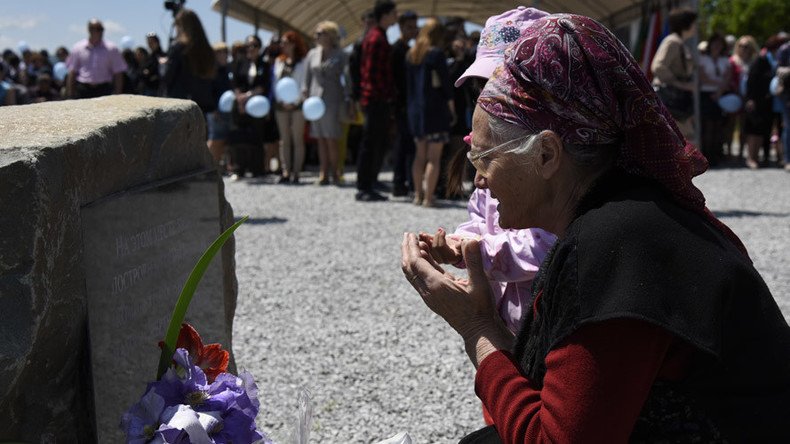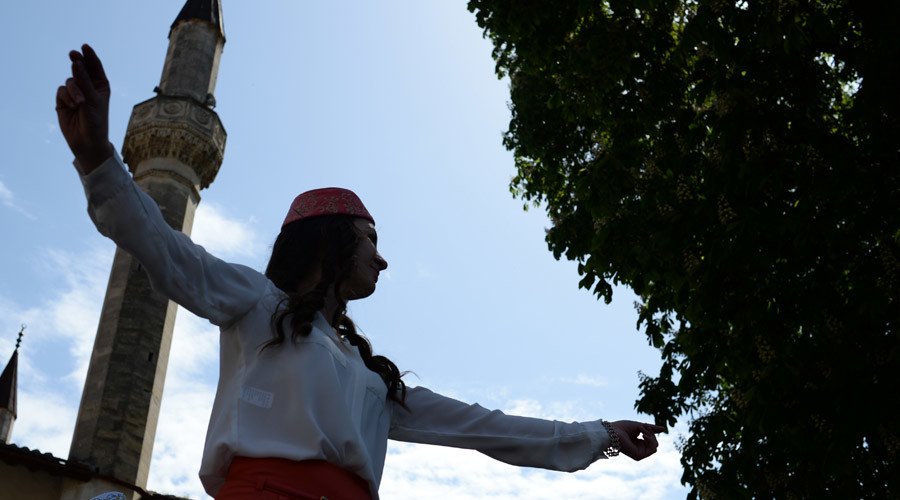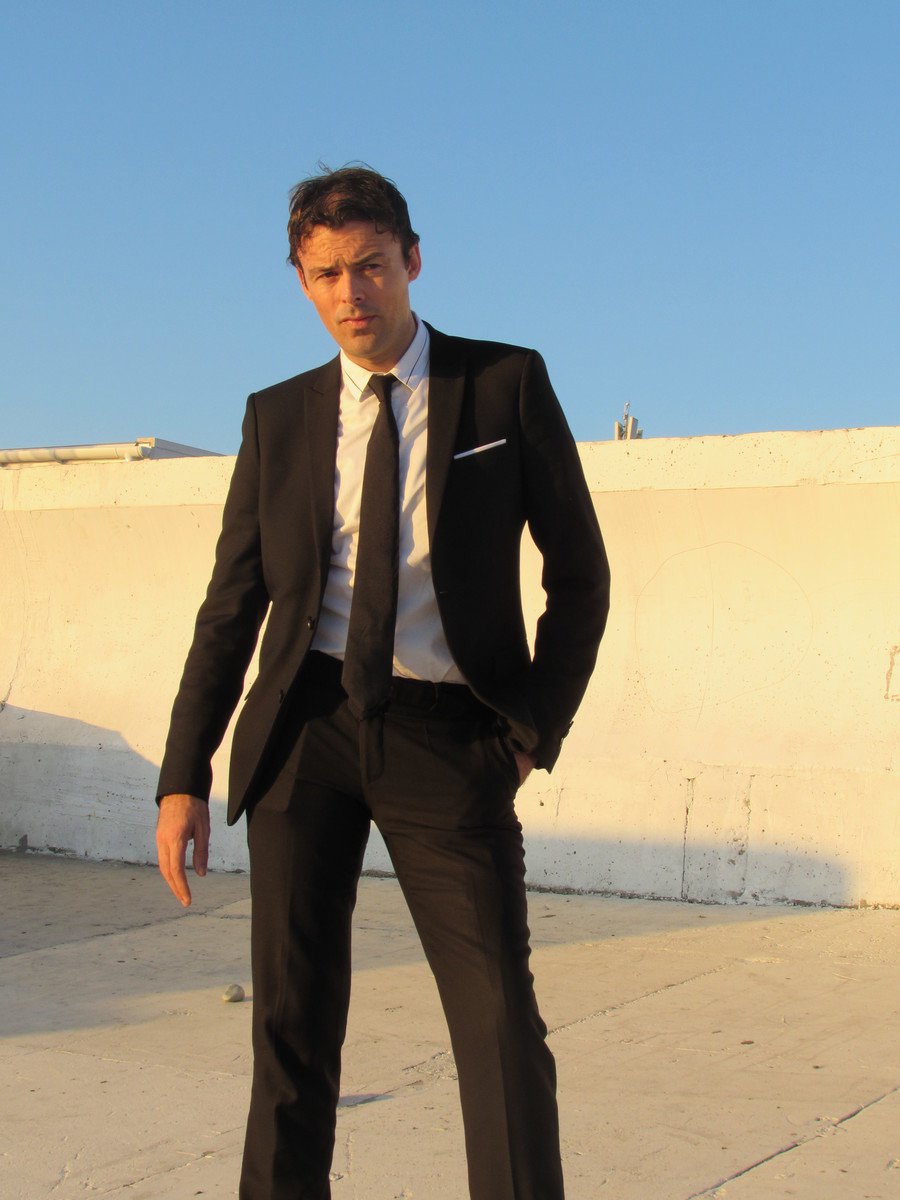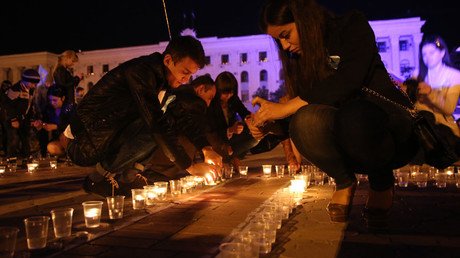Crimea River: Decades after Tatar deportation, situation is far from black & white

Ukrainian singer Jamala's controversial Eurovision victory has again placed the spotlight on Crimea, which was reabsorbed into Russia in 2014. Sadly, much coverage of the situation is still wildly selective and misinformed.
This week in 1944, Stalin’s Soviet Union deported about 200,000 Crimean Tatars from their historical homeland to distant regions of the USSR, primarily in Central Asia. The motives of the dictator, who was born in Georgia, were typical of his mindset. Because around 10,000 Crimean Tatars had fought alongside occupying German Nazi forces, he considered the entire ethnic group tainted by association with the enemy and enforced collective punishment. Of course, many Tatars had also served in the Red Army but Stalin wasn’t interested in balanced reason.
Stalin ordered the NKVD, controlled by his compatriot Lavrentiy Beria, to implement the scheme. The forced deportees were given less than an hour to gather their personal possessions, after which they were loaded onto trains and moved out of Crimea. The vast majority ended up in today’s Uzbekistan. Conditions were appalling en route and close to 8,000 people died during the journey.
Harsh Movements
Sadly, the forced movement of Crimean Tatars was not an isolated incident. Numerous nationalities and ethnicities were shunted around the USSR by Stalin. Including Balts, Volga Germans, Chechens, Ingush, Finns, Kalmyks, Balkars and many more. In the 1930’s, Stalin had shifted more than two million Kulaks from present day Ukraine and western Russia to Siberia, Kazakhstan and Russia’s frigid north. The Kulaks had been the successful farmers of the pre-communist age.
In 1937, 172,000 Koreans were transferred from the Far East to Uzbekistan and Kazakhstan. On the basis that they were "spies and diversionists for the Japanese secret service." Unlike the Crimean Tatars they were never brought home, and there remains a large Korean minority in Uzbekistan today.
Incidentally, while it was Mikhail Gorbachev who initiated the process of rehabilitation for Tatars, it was Vladimir Putin who ultimately signed the decree into law in 2014. He later quoted Queen Catherine the Great, who in 1783 said: “Crimean Tatars will be perceived by Russia as its own citizens with all ensuing consequences. Their rights, their mosques and their religion will be fully respected, which is extremely important.” Putin indicated he fully agreed with her sentiments.
Presumably, Russia would have completed this rehabilitation sooner if Crimea hadn't been cast adrift in Ukraine after the Soviet collapse. Its people were victims of Nikita Khrushchev's political machinations of 1954. At the time, Khrushchev was engaged in a bitter power struggle, with Soviet Prime Minister Georgy Malenkov, for control of the USSR. Needing the support of Ukrainian communist leader, Oleksiy Kyrychenko, he transferred Crimea to Ukraine as a carrot.
Poles were the victims of prejudice in 1940. After the USSR acquired the Lviv region, anywhere between 270,000 and 1.4 million of them were transplanted to Siberia. Ironically, Ukrainian villagers then replaced them in Lviv, and their descendants are Ukraine’s most hardline nationalists today. In a city that remains intrinsically Polish in feel, look and design.
Simplistic Reportage
Across the media, Crimea is a hot topic at present, due to Jamala’s success. The singer’s own background reflects the far-from-linear ethnicity of many Ukrainians and Russians. She’s half Crimean Tatar, and half Armenian. Jamala was born in Kyrgyzstan but evidently considers herself Ukrainian. The pop star’s complicated identity is common across the former USSR.
While Western coverage of the peninsula has focused on the Tatars, it frequently gives the impression that they are the only grouping with a stake. Analysts and journalists often seem to be under the mistaken belief that there is some kind of “pure” Tatar community which dominates the region. This is complete hokum. In actual fact, Tatars account for about 12 percent of the population. And many of them might also feel part of another nationality too.
Additionally, a lot of self-appointed Crimea “experts” continue to argue that life was much better there for all residents under Kiev’s rule and would remain so today if Ukraine was still in control. This doesn’t stand up to scrutiny. It's also mildly amusing that many of these activists don't appear to have visited Crimea since 2014 and rely on Ukrainian news sources for information, which are heavily biased.
@ellie_knott@akarlin88 As you don't trust Russian data, how much time have u spent there in past 2 years, seeing situation for yourself?
— Bryan MacDonald (@27khv) May 6, 2016
@akarlin88@DanielleRyanJ@27khv@Nils18 I take my news from https://t.co/6b73LYaTFb which would radically disagree with you
— Ellie Knott (@ellie_knott) May 18, 2016
@ellie_knott expertise? How much time have you spent there in last two years? Do you have on-the-ground analysis I can read? Thanks
— Bryan MacDonald (@27khv) May 6, 2016
If Ukrainian governance was so much better than Russian, why did the Tatar language almost die out under Kiev's watch? In 2013, there were warnings the language was on the verge of extinction. Then it was only taught in 15 schools. Where was the Western outrage, bemoaning this fact at the time? Or did concern for Tatar rights only begin in 2014?
Also, in the 2001 census, 77 percent of people in Crimea said they spoke Russian as a first language. By 2014, that had risen to 84 percent. If the peninsula was genuinely absorbed into Ukraine, how can it be explained that the number of Russian speakers has been increasing? And this in the face of aggressive Kiev policies to force all schools into using Ukrainian as their first language.
Shooting Your Own Foot
Since Crimea has returned to Moscow’s embrace, a constant propaganda theme has been the notion that living standards are declining there. We frequently hear that “the economic situation in Crimea is desperate” and that “tourism has collapsed.” But the West has placed Crimea under heavy sanctions, which prevent EU and American companies from investing in the region. Plus, most Western governments advise against travel there. Furthermore, Ukraine itself has supported blockades of food and cut-off water and electricity at times. These moves have also been backed by Tatar exile organizations.

This group, known as the Mejlis, is now outlawed in Crimea. This happened after Mejlis leaders Refat Chubarov, Lenur Islyamov and Mustafa Djemilev used the Ukrainian ultra-nationalist paramilitaries of Right Sector to organize a “food and energy blockade of Crimea.” The radicals stopped trucks carrying food from Ukraine and blew up several pylons supplying mains electricity to the peninsula. If this happened in any Western country, it would be labeled terrorism. And that’s exactly what Crimea’s Supreme Court also considered it to be.
Aside from this, cutting off electricity to two million people for months is hardly going to help win “hearts and minds,” is it? Not to mention that the majority of the world's Crimean Tatars actually live in Crimea. Thus, the Mejlis’ move cut off electricity to the bulk of their own people. This was surely self-defeating.
Standard Western myopia also concerns the local financial situation. Incomes may have dropped in dollar terms since 2013 is a common theme. This fails to acknowledge that both the hryvnia and the ruble have declined in value since the Maidan coup. The difference is that the hryvnia has fallen much further, from 11 to the dollar in 2014, to 25 now. At the same time, the ruble has atrophied from about 35 to 65.
Things Could Be Worse
According to Jon Hellevig, during 2015 average monthly salaries in Crimea grew from 17,000 rubles ($260) to 30,000 rubles ($459). By contrast, today the average salary in Ukraine is 4,362 UAH, which is $172. It’s worth noting that Crimean incomes would be expected to be lower than the national average, as the region was always one of the poorest in Ukraine. Thus, had Crimea decided to maintain ties with Kiev, the fiscal situation would, without question, be much worse than it is today. Not to mention that Ukraine has banned flights to and from Russia, so Crimea would be cut off from its most lucrative tourist market.
Additionally, we have the notion that Russia somehow acquired the territory against the wishes of its residents. This also appears to be untrue. In June 2014, a Gallup poll, organized by Washington’s state controlled Broadcasting Board of Governors asked Crimeans if the results in the March 16, 2014 referendum to secede reflected the views of the people. A total of 82.8 percent of respondents said yes. Germany’s GFK conducted a similar survey in 2015 and the results were almost exactly the same, 82 percent again supported Russian rule. Again despite all the Western protests about Crimea’s return to Russia being illegal, nobody has tried to make a case against it, because the Kosovan precedent could then also be investigated.
The Crimean Tatar deportation was a terrible crime. It was part of a pattern of sectarian outrages during the leadership of a very, very horrible man. However, to try to link it to modern politics is completely disingenuous. For a start, Russia is not the USSR. And the USSR was not Russia.
It's blindingly obvious that most Crimeans want to be part of Russia. Furthermore, it also seems that life for ordinary Tatars was no better under Kiev’s control. The challenge now for Moscow is, despite sanctions, to provide Tatars, and other Crimean residents, with the living standards Ukraine couldn’t. And sustain them. If the West really wanted to help Crimeans, it would lift the sanctions, which serve no positive purpose for anyone.
The statements, views and opinions expressed in this column are solely those of the author and do not necessarily represent those of RT.














